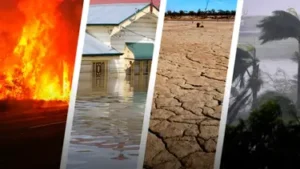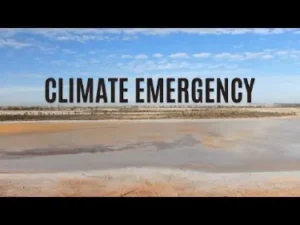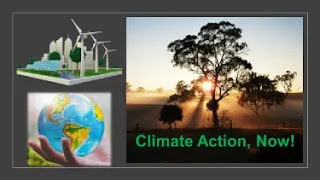Description
Australia’s green revolution commitment to environmental stewardship can be funded by using its economic sovereign power to spearhead a global green revolution.
Introduction
Australia is uniquely positioned at the forefront of global climate challenges. With its rich natural resources, diverse ecosystems, and vibrant communities, the nation holds the key tools—environmental advocacy and robust financial sovereignty—to drive significant and necessary change. This article delves into the imperative of harnessing these strengths to start substantial environmental actions that ensure a sustainable and thriving future for all Australians.
Confronting the Climate Crisis in Australia
Immediate Impacts on Nature and Society

Australia’s battle with climate change manifests in more frequent and intense weather events—from devastating bushfires that ravage landscapes and wildlife, to prolonged droughts that threaten water supplies and agricultural productivity. These phenomena do not merely disrupt the natural order; they pose severe risks to public health and safety, increase economic vulnerabilities, and cause substantial costs in adaptation and recovery.
The Slow Response to a Rapid Crisis
Despite the clear and present danger, Australia’s climate response has lagged, particularly in reducing its carbon footprint. The nation’s substantial financial injections into the fossil fuel industry starkly contrast with the global movement towards sustainability, thereby worsening environmental damage and stalling the shift towards cleaner, more sustainable energy solutions. This disconnect highlights a critical need for an updated, aggressive approach to climate policy that matches the pace of environmental degradation.
The Escalating Climate Emergency
Widespread Consequences for Communities

Climate change is not an isolated environmental issue; it is a pervasive crisis affecting every facet of Australian life. The repercussions extend beyond natural disasters, affecting the socio-economic stability of communities. As habitats shrink and food sources become scarce, indigenous wildlife struggles, affecting biodiversity and tourism, which are vital to national revenue. Moreover, increased heatwaves and pollution contribute to public health crises, straining healthcare systems and lowering quality of life.
Economic and Social Implications
The government’s ongoing support for fossil fuels not only complicates environmental efforts but also financial policies. This support diverts funds from renewable projects that could stimulate economic growth through innovative technologies and job creation in green sectors. As such, the nation’s policy misalignment sends mixed signals to investors and delays significant opportunities in the rapidly growing global renewable market.
Deepening Environmental and Economic Quandaries
Policy Conflicts and Financial Impediments
The financial commitment to fossil fuels directly conflicts with Australia’s environmental commitments and hampers progress towards national and global climate goals. This continued financial direction not only locks the country into an outdated energy infrastructure but also impedes the necessary transition to greener, more sustainable technologies, which are crucial for long-term ecological and economic health.
The Rising Cost of Delayed Action
The economic, environmental, and social costs of delaying decisive action against climate change are mounting rapidly, threatening not only Australia’s immediate environment but also its long-term economic stability and public health.
Economic Costs: The financial repercussions of inaction are profound. Delayed transition to renewable energy sources means continued investment in increasingly obsolete fossil fuel technologies, which are not only harmful to the environment but also becoming less economically viable as global energy markets shift. This hesitancy places Australia at a competitive disadvantage internationally, where other nations are capitalizing on the economic benefits of renewable industries. Furthermore, the costs associated with climate-related disasters—such as bushfires, floods, and droughts—are significant. These events damage infrastructure, decrease agricultural productivity, and increase insurance premiums and disaster recovery expenditures, straining government budgets and diverting funds from essential public services.
Environmental Costs: Environmentally, the delay worsens the damage to Australia’s unique ecosystems. Prolonged reliance on fossil fuels contributes to higher carbon emissions, accelerating global warming and leading to more severe weather events. This not only leads to loss of biodiversity but also affects freshwater resources and agricultural land, making recovery increasingly difficult and expensive. The degradation of natural barriers such as coral reefs and coastal mangroves, which protect against storm surges and tsunamis, further exposes the country to natural disasters.
Social Costs: On a social level, the health impacts of climate change due to poor air quality, heatwaves, and the spread of diseases pose increasing risks to the Australian public. These health challenges lead to higher healthcare costs and lower productivity, as individuals take more sick days and experience decreased well-being. Additionally, vulnerable communities, particularly those in rural and coastal areas, face disproportionate risks, worsening social inequalities and requiring more robust community support systems.
Opportunity Costs: Lastly, there are significant opportunity costs in delaying action on climate change. By not embracing a green transition, Australia misses the job creation potential in the renewable sector, investments in sustainable technologies, and the global leadership role in climate solutions. These missed opportunities can hinder Australia’s economic transformation and its ability to influence global environmental policies positively.
The window for mitigating these costs is narrowing. Immediate, proactive measures are essential to curtail these losses and position Australia as a resilient, innovative leader in a rapidly changing global landscape. The longer the delay, the more drastic the consequences, making the imperative for action clear and urgent.
Pioneering a Sustainable Future
Transitioning to Renewable Energy
Embracing renewable energy is essential for mitigating climate impact and securing economic stability. By investing in solar, wind, and hydroelectric power, Australia can reduce its greenhouse gas emissions and harness its geographic advantages to become a leader in renewable energy. This transition not only supports environmental health but also propels the economy forward by creating sustainable jobs and industries.
Economic Opportunities in Green Innovation
The shift towards green technology presents substantial economic opportunities. By fostering innovation and investing in green infrastructure, Australia can enhance energy security, reduce carbon emissions, and show itself as a competitive player in the global green technology market. Government incentives for private sector investment in green innovations can accelerate the adoption of sustainable technologies, promoting long-term economic growth and environmental sustainability.
Conclusion and Call to Action
Australia’s path to becoming a green leader is fraught with challenges but rich with opportunity. By committing to renewable energy and innovative, sustainable practices, Australia can not only mitigate the adverse effects of climate change but also lead by example on the global stage. Now is the time for action.
Question for Readers
What immediate steps should Australia take to combat climate change and strengthen its position as a global environmental leader?
Share This Article
Drive the conversation about Australia’s role in the global green revolution by sharing this article to spread awareness and advocate for change. Your engagement is crucial as we push for a sustainable and prosperous future.
Use hashtags #AustraliasGreenRevolution, #ClimateActionNow, #RenewableEnergy, #EnvironmentalSustainability
References:
Mitigating Climate Change: Growth-Friendly Policies to Achieve Net Zero Emissions by 2050: https://cama.crawford.anu.edu.au/sites/default/files/publication/cama_crawford_anu_edu_au/2021-09/75_2021_jaumotte_liu_mckibbin00.pdf
Australian fossil fuel subsidies surge to $11.6 billion in 2021-22: https://australiainstitute.org.au/post/australian-fossil-fuel-subsidies-surge-to-11-6-billion-in-2021-22/
Reports from the Climate Council on the frequency of extreme weather events in Australia and their link to climate change.
New Report: Weather Gone Wild: Climate Change-Fuelled Extreme Weather in 2018: https://www.climatecouncil.org.au/resources/climate-change-extreme-weather/#:~:text=The%20Climate%20Council’s%20latest%20report,a%20more%20energetic%20climate%20system.
Communication Guide: Extreme Weather: https://www.climatecouncil.org.au/wp-content/uploads/2021/12/CC_MVSA0292-CC-Extreme-Weather-Comms-Guide_V5-FA-1.pdf
Climate change and the agricultural sector: https://www.agriculture.gov.au/agriculture-land/farm-food-drought/climatechange
National Statement on Climate Change and Agriculture: https://www.agriculture.gov.au/agriculture-land/farm-food-drought/climatechange/national-statement-on-climate-change-and-agriculture
IPCC (Intergovernmental Panel on Climate Change) reports detailing the specific risks and challenges faced by Australia due to climate change.
Breaking Down The Latest IPCC Report: https://www.climatecouncil.org.au/resources/breaking-down-latest-ipcc-report/
Climate Change Risks to Australia’s Coast: https://www.agriculture.gov.au/sites/default/files/documents/cc-risks-full-report.pdf

